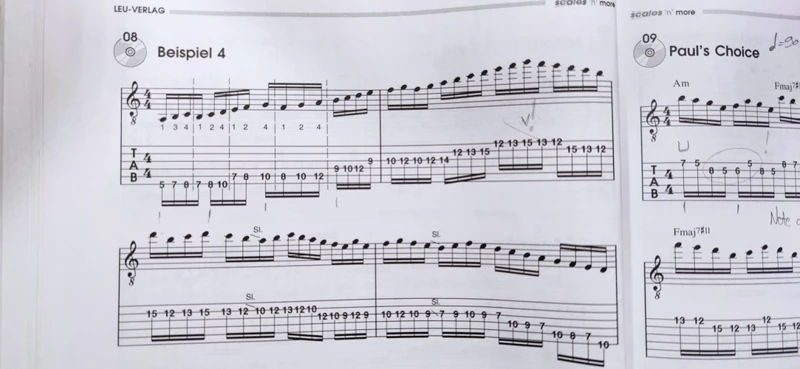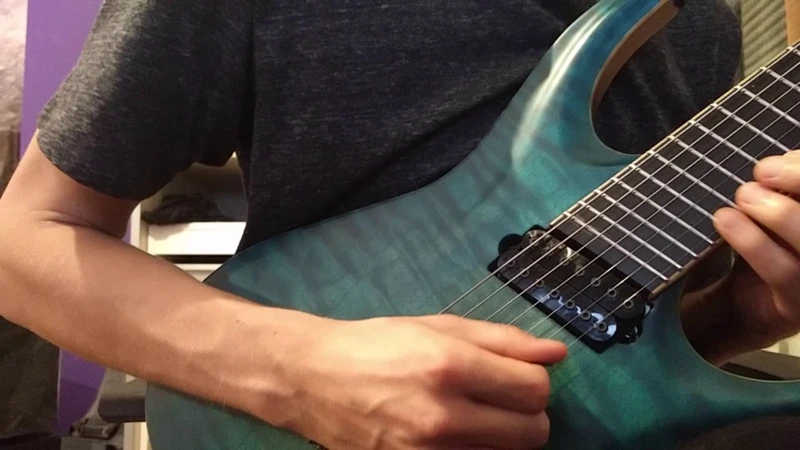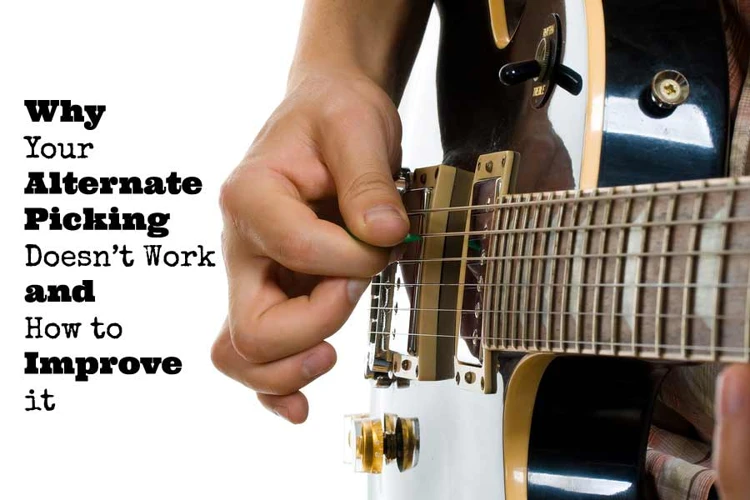Introduction
When it comes to playing country music on the guitar, alternate picking is a crucial technique that every guitarist needs to master. However, achieving proficiency in alternate picking is easier said than done. Many guitarists make common mistakes that hinder their progress and prevent them from reaching their full potential. In this article, we will explore five of the most common mistakes in alternate picking in country music, and provide step-by-step solutions to help you improve your technique and sound like a pro. So, if you’re struggling with alternate picking or want to take your skills to the next level, keep reading!
Explanation of Alternate Picking
Alternate picking is a crucial technique that every country guitarist must master. It’s a method of playing a stringed instrument where you use a back-and-forth motion with your pick to strike the strings. The term “alternate” refers to using an alternating up-and-down motion for picking the strings. It can be applied to any picking style, such as flatpicking or fingerpicking, and it’s especially popular in country music.
Alt-picking can create a smooth and consistent sound that brings a rhythmic feel to country guitar music. It’s also an efficient technique, allowing you to pick the strings more quickly and with fewer movements as compared to other methods.
Many country guitarists use alternate picking in their solos to create complex and intricate arrangements that showcase both their playing ability and creativity. The technique is also commonly used in rhythm playing to provide a constant flow of notes.
Learning alternate picking is vital for every country guitarist. It’s a technique that requires practice and attention to detail, but with consistent effort and focus, you can master it and improve your playing. In the upcoming sections, we will look at the common mistakes made while alternate picking in country music and how to fix them. We’ll also provide exercises and tips to help you improve your skills and take your playing to the next level.
Mistake #1: Inconsistent Tempo and Dynamics
When it comes to mastering country guitar, alternate picking is an essential technique that every guitarist must learn. However, it’s easy to fall prey to common mistakes that can hinder progress and make it difficult to play with precision and accuracy. One of these mistakes is inconsistent tempo and dynamics, which can take the listener out of the groove and ruin even the most well-crafted solos. In this section, we’ll explore the causes and solutions to this problem, as well as some exercises that will help you develop a consistent sense of rhythm and dynamics in your playing. Whether you’re a beginner or an advanced player, these tips will help you improve your overall sound and play more confidently. For more information on alternate picking in country music, check out our guide.
Causes and How to Fix Them
Causes and How to Fix Them:
Mistake #1: Inconsistent Tempo and Dynamics:
- Causes: Inconsistent tempo and dynamics can occur when the guitarist tries to play too fast or too slow without proper practice. It can also occur if the guitarist does not have good control over their pick or if there is a lack of synchronization between the hands.
- How to Fix Them: To fix this mistake, a guitarist should practice playing at a slow and steady tempo while maintaining consistent dynamics. Once they have achieved control over their pick, they can gradually increase the tempo. Synchronization between the hands can be achieved by practicing exercises that focus on both hands, such as alternate picking exercises for beginners.
- Useful link: Improve your alternate picking skills
Mistake #2: Improper Wrist and Hand Positioning:
- Causes: Improper wrist and hand positioning can lead to tension in the muscles, which can cause discomfort and pain. It can also lead to a lack of control over the pick, resulting in unnecessary movement and an inability to play fast passages.
- How to Fix Them: To fix this mistake, a guitarist should focus on maintaining a relaxed wrist and hand position. The wrist should be slightly bent, and the hand should be positioned in a natural and comfortable way. Exercises can help to develop the muscles and improve control over the pick.
- Useful link: Learn from top country guitarists who use alternate picking
Mistake #3: Overuse of Arm Movement:
- Causes: Overusing arm movement can occur when the guitarist tries to play too fast without proper practice. It can also occur if the guitarist is trying to compensate for a lack of control over their wrist and hand. This can lead to tension in the muscles and an inability to play fast passages.
- How to Fix Them: To fix this mistake, a guitarist should focus on using efficient arm movement. The arm should be used sparingly and only when necessary. The wrist and hand should be the primary drivers of the picking motion. Exercises can help to develop this skill.
- Useful link: Advanced alternate picking techniques for country guitar
Mistake #4: Neglecting the Weaker Hand:
- Causes: Neglecting the weaker hand can occur when the guitarist focuses too much on their dominant hand. This can lead to an imbalance in skill between the hands, making it difficult to play fast passages and complex rhythms.
- How to Fix Them: To fix this mistake, a guitarist should practice exercises that focus on their weaker hand. This can include exercises that isolate the weaker hand or that require both hands to work together in a balanced way.
- Useful link: Alternate Picking Exercises for Beginners
Mistake #5: Out of Sync Picking with Strumming:
- Causes: Out of sync picking with strumming can occur when the guitarist lacks coordination between the picking and strumming hands. This can lead to a disjointed sound and difficulty in playing rhythmically complex passages.
- How to Fix Them: To fix this mistake, a guitarist should practice exercises that focus on coordinating the picking and strumming hands. This can include exercises that require both hands to work together rhythmically, as well as exercises that isolate each hand and develop its specific skills.
- Useful link: Alternate picking in country music solos
Exercises to Develop Consistency
One of the keys to fixing the problem of inconsistent tempo and dynamics in alternate picking is practicing exercises that focus on developing consistency. Here are some exercises to try:
Metronome practice: Set a metronome to a slow tempo (such as 60 bpm) and practice picking one note per click, starting with downstrokes. Once you’ve mastered downstrokes, move on to upstrokes, then focus on switching between downstrokes and upstrokes smoothly. Gradually increase the tempo as you improve.
String skipping: Choose a series of notes that require you to skip strings when picking. For example, you might pick the 6th string with a downstroke, then skip to the 4th string and pick with an upstroke, and so on. Practice slowly at first, but focus on maintaining a consistent tempo and dynamics.
Alternate picking patterns: Choose a simple pattern of notes (such as two notes on one string, then two notes on the next string, and so on), and practice alternate picking, making sure to maintain a consistent speed and dynamics throughout.
Internal linking: For those looking to improve their alternate picking in country music, check out our article on Alternate Picking in Country Solos for more exercises and tips.
Remember to start slow and focus on maintaining consistency before gradually increasing the tempo or complexity of the exercise. By practicing consistently, you’ll soon notice improvements in your alternate picking technique.
Mistake #2: Improper Wrist and Hand Positioning
Playing the guitar with proper technique is crucial for any musician, especially for country guitar players. One of the most common mistakes country guitar players make is improper wrist and hand positioning. This can lead to tension, pain, and reduced speed and accuracy in their playing. It can also limit their ability to play certain techniques and styles. In order to improve your playing, you need to address this issue and develop the correct technique. Here are some common causes and solutions for improving your wrist and hand positioning.
Causes and How to Fix Them
When it comes to alternate picking in country music, there are several common mistakes that guitarists make. But don’t worry, because with a little bit of knowledge and practice, these mistakes can be fixed. In this section, we’ll dive into the causes of each mistake and how to fix them.
| Mistake | Causes | Solutions |
|---|---|---|
| Inconsistent Tempo and Dynamics | Not paying attention to the metronome, lack of practice, lack of focus. | Practice regularly with a metronome, start at a slow tempo and gradually increase, focus on keeping the tempo consistent, practice dynamics by alternating between soft and loud picking. |
| Improper Wrist and Hand Positioning | Using too much tension in the hand and wrist, not holding the pick correctly, improper angle of the wrist. | Relax the hand and wrist, hold the pick with a light grip, hold the wrist at a comfortable angle, use slanted picking to improve accuracy. |
| Overuse of Arm Movement | Relying too much on arm movement, not using efficient picking motion. | Focus on using the wrist and fingers to pick, use minimal arm movement, practice economy picking technique. |
| Neglecting the Weaker Hand | More focus on the dominant hand, lack of practice for the weaker hand. | Balance practice between both hands, start with simple exercises for the weaker hand, gradually increase difficulty, use a metronome to ensure evenness between hands. |
| Out of Sync Picking with Strumming | Difficulty in coordinating the picking and strumming hand, lack of practice combining both techniques. | Practice simple picking and strumming patterns, start slowly and gradually increase difficulty, use a metronome to ensure both hands are in sync, focus on precision and timing. |
By understanding these causes and applying the solutions, you’ll be well on your way to improving your alternate picking technique in country music. Remember to be patient and persistent in your practice, and you’ll see improvement over time.
Exercises to Develop Proper Positioning
Developing proper wrist and hand positioning when alternate picking in country music is crucial for achieving accuracy and consistency in your playing. Here are some exercises you can do to develop proper positioning:
- Finger Exercises: Practice finger exercises to develop flexibility and strength in your hand. One such exercise is to place your hand flat on a table and lift each finger individually while keeping the others pressed down.
- Picking Hand Positioning: Focus on proper placement of your picking hand. Your wrist should be slightly arched, and your fingers should rest lightly on the strings. Practice picking with a metronome to build muscle memory and consistent technique.
- Fretting Hand Positioning: Pay attention to your fretting hand positioning. The hand should be curved with your fingers perpendicular to the fretboard. Practice scales and chord progressions with a metronome, focusing on accurate placement and transitions.
- Alternate Picking Exercises: Practice alternate picking exercises, such as playing scales, with strict attention to proper hand positioning. Start slow and gradually increase the tempo as you become more comfortable with the technique. If you feel tension or discomfort in your hand, stop and assess your positioning.
- Single String Exercises: Play single string exercises to develop accuracy and control in your picking hand. Focus on lifting your fingers off the strings just enough to allow your pick to strike cleanly without extraneous noise.
Remember, proper hand positioning takes time and effort to develop. But with regular practice and attention to detail, you can achieve a comfortable, efficient technique that will serve you well in your country music playing.
Mistake #3: Overuse of Arm Movement
When it comes to mastering alternate picking in country music, many guitarists fall victim to the overuse of their arm muscles. This mistake can cause a range of issues, including unnecessary strain on the arm, inconsistency in picking speed and rhythm, and even injury over time. It’s essential to address this error and learn to pick with a more efficient technique that utilizes the natural movement and strength of the wrist and hand. In the following section, we will explore some of the causes behind this common mistake and offer practical solutions and exercises for developing more efficient arm movement.
Causes and How to Fix Them
One of the most common mistakes when it comes to alternate picking in country music is inconsistent tempo and dynamics. There are several causes for this mistake that can be addressed through various fixes.
Causes:
- Not properly practicing with a metronome.
- Trying to play too fast too soon.
- Not paying attention to dynamics while playing.
To improve your alternate picking and avoid inconsistent tempo and dynamics, there are a few things you can do.
How to Fix Them:
- Practice with a metronome regularly to train your inner sense of rhythm.
- Start slow and gradually increase your speed as your accuracy and timing improve.
- Pay attention to your dynamics while playing by varying your picking attack to bring out different tones from your guitar. This will make your playing more expressive and interesting.
Additionally, there are exercises you can do to help improve your consistency with alternate picking. These exercises can be simple, such as playing scales with strict alternate picking, or more complex, such as playing strict alternate picking patterns with changing time signatures.
Through consistent practice and paying attention to your technique, you can overcome the mistake of inconsistent tempo and dynamics and become a more confident and skilled alternate picker.
Exercises to Develop Efficient Arm Movement
In order to improve your alternate picking technique, it is important to focus on efficient arm movement. One common mistake is overusing your arm when picking, which can lead to tension and fatigue. By focusing on proper wrist and hand positioning, you can minimize arm movement and improve your accuracy.
Here are some exercises to develop efficient arm movement:
| Exercise | Description |
|---|---|
| String Skipping | This exercise involves skipping strings while picking, which requires precise arm movement. Start by picking the lowest string, then skip to the next highest string and pick that one, then skip to the next highest string and pick that one, and so on. This will help you develop control and accuracy with your picking hand. |
| Single String Picking | Focus on picking a single string using only your wrist and fingers, minimizing arm movement. Start slowly and focus on precision and control, gradually increasing your speed. |
| Alternating String Picking | This exercise involves picking each string in alternating succession, starting with the lowest string and working your way up to the highest. Focus on keeping your wrist and hand steady while minimizing arm movement. |
| String Skipping with Sweeping | Combine string skipping with sweeping motions for a challenging exercise that trains both efficient arm movement and precise muting. Start by picking the lowest string with an upward sweep, then skip to the next highest string and down sweep, muting the skipped string with your palm. Repeat this pattern on each string, focusing on smooth, efficient movement. |
By incorporating these exercises into your practice routine, you can improve your alternate picking technique and develop efficient arm movement. Remember to focus on proper wrist and hand positioning, minimize arm movement, and aim for precision and control. Practice regularly and gradually increase your speed for best results.
Mistake #4: Neglecting the Weaker Hand
One common issue that many guitarists face when it comes to alternate picking is neglecting their weaker hand. It’s natural to want to focus on your dominant hand, as it often feels more comfortable and can produce better results initially. However, ignoring your weaker hand can lead to imbalance and limitations in your playing. So, how can you address this problem and develop a more well-rounded approach to alternate picking? Let’s explore some causes and solutions.
Causes and How to Fix Them
Whether you’re a beginner or an experienced player, common mistakes can hold you back from achieving your full potential when it comes to alternate picking in country music. Here are the most common causes of these mistakes and how to fix them:
| Mistake | Causes | How to Fix Them |
|---|---|---|
| Mistake #1: Inconsistent Tempo and Dynamics | Inconsistent tempo could be caused by improper timing or rhythm, and inconsistent dynamics can often be due to improper finger or hand placement. | Practice with a metronome and gradually increase the speed. Scales are key to building up consistency in one’s picking. It is also important to keep your motion and pressure consistent as well. |
| Mistake #2: Improper Wrist and Hand Positioning | Improper wrist and hand position can lead to unnecessary tension in the hand as well as a loss of dexterity and control over the instrument. | Practice proper hand and wrist positioning in order to develop a fluid and consistent swing. Place the thumb behind the neck and let the fingers fall naturally on the strings. |
| Mistake #3: Overuse of Arm Movement | Overusing arm movement creates volume inconsistencies in music as well as stifles the development of proper wrist technique. | Focusing on proper arm posture and minimizing the movement in the upper arm can help reduce the overuse of arm movement. Practice using the wrist to generate picking motion instead. |
| Mistake #4: Neglecting the Weaker Hand | Neglecting the weaker hand will result in a lack of control, speed and rhythm. This can also impede one’s ability to play more advanced pieces. | Practice exercises that target the weaker hand, including finger independence drills, scales, and chromatic exercises. The best way to improve the weaker hand is to practice and become comfortable with both hands, both separately and together. |
| Mistake #5: Out of Sync Picking with Strumming | Misalignment of picking with strumming can create a disjointed sound that will detract from a player’s ability to develop rhythm and dynamics in their playing. | The best way to improve this problem is to practice with a metronome to develop a sense of timing and rhythm. It is also important to pause between strumming and picking to create a clear separation of sound. |
By understanding the causes of these common mistakes, and following the recommended fixes, players can build up their skills and create the beautiful melodies and rhythms that define country and other guitar styles.
Exercises to Develop Balance Between Hands
To develop balance between hands for alternate picking in country music, there are a few exercises that can be incorporated into your practice routine. These exercises focus on improving the weaker hand and creating an overall more even sound.
Exercise 1: Single String Alternate Picking
This exercise involves playing a single note on a single string and alternating between up and down strokes with each finger. Start at a slow tempo and gradually increase speed as you become more comfortable with the motion. Focus on keeping each stroke even in volume and timing.
Here is an example of how to lay out this exercise in a table:
| String | Note | Up Stroke | Down Stroke |
|---|---|---|---|
| 1 (e) | 12th fret | Index finger | Middle finger |
| 1 (e) | 10th fret | Middle finger | Index finger |
| 1 (e) | 8th fret | Index finger | Middle finger |
Exercise 2: Cross-String Alternate Picking
This exercise involves moving between two different strings while alternating between up and down strokes. Start at a slow tempo and focus on keeping each stroke even in volume and timing. This exercise is great for improving coordination between both hands.
Here is an example of how to lay out this exercise in a table:
| String | Note | Up Stroke | Down Stroke |
|---|---|---|---|
| 1 (e) | 12th fret | Index finger | Middle finger |
| 2 (B) | 10th fret | Middle finger | Index finger |
| 1 (e) | 8th fret | Index finger | Middle finger |
| 2 (B) | 6th fret | Middle finger | Index finger |
Incorporating these exercises into your practice routine can significantly improve the balance between both hands in alternate picking. Remember to start at a slower tempo and gradually increase speed as you become more comfortable with the motion.
Mistake #5: Out of Sync Picking with Strumming
As a country musician, you know that strumming and picking are integral parts of the genre. But what happens when those two techniques don’t sync up? It can throw off the entire performance and lead to a lackluster sound. This issue is commonly known as the picking and strumming synchronization problem, and it’s a mistake frequently made by beginner and intermediate players. In this section, we’ll explore the reasons behind this issue and give practical tips and exercises to help you develop better coordination between your picking hand and strumming hand. Let’s get started!
Causes and How to Fix Them
To become proficient in alternate picking, it is important to identify and address the common mistakes made by guitarists. Below are the common causes of mistakes with alternate picking in country music, as well as how to fix them.
| Mistake | Causes | How to Fix Them |
|---|---|---|
| Inconsistent Tempo and Dynamics | One of the most common causes is an inconsistent pick attack, which can lead to a variety of issues. Another common cause is a lack of awareness of the beat, leading to choppy or rushed playing. | To address inconsistent tempo and dynamics, practice with a metronome and focus on keeping a steady beat. Start with slow tempos and gradually increase the speed. Be mindful of the picking attack and work on maintaining consistent dynamics. |
| Improper Wrist and Hand Positioning | Improper positioning can lead to reduced efficiency and can place unnecessary strain on the wrist and hand. Lifting the wrist too high or keeping it too low, and gripping the pick too tightly, are common causes of improper positioning. | Focus on maintaining a relaxed grip and keeping the wrist close to the guitar strings. Position the hand so that it is comfortable and natural, allowing for maximum efficiency. |
| Overuse of Arm Movement | Overuse of arm movement can lead to fatigue and reduced speed. Using the arm excessively can also lead to poor timing and an unbalanced sound. | Focus on efficient and minimal arm movement. Practice using the wrist and fingers to pick the strings, rather than relying on excessive arm movement. This technique will allow for greater speed and control. |
| Neglecting the Weaker Hand | Neglecting the weaker hand can lead to poor balance and coordination between the two hands. The weaker hand may also struggle to keep up with the stronger hand, causing synchronization issues. | Be sure to practice exercises that are specifically designed to develop the weaker hand. Start with slower tempos and gradually increase speed as the weaker hand becomes stronger. Focus on developing balance and coordination between the hands. |
| Out of Sync Picking with Strumming | Out of sync picking and strumming can lead to a disjointed sound that does not flow smoothly. Common causes include a lack of coordination between the hands, and a lack of awareness of the beat. | To address this issue, practice picking and strumming exercises that are designed to improve coordination. Focus on maintaining a steady beat and being aware of the timing of each pick and strum. |
By identifying these causes and implementing the recommended fixes, guitarists can improve their alternate picking technique and become more proficient in country music. Remember to focus on one issue at a time and practice consistently in order to see results.
Exercises to Develop Coordination Between Picking and Strumming
Developing coordination between picking and strumming is crucial for playing country music. Here are some exercises to help you improve your coordination:
| Exercise | Description |
| Alternate Pick and Strum | Alternate between picking a note and strumming a chord. Start slow and gradually increase your tempo. Focus on syncing your picking and strumming. |
| Strumming with Palm Muting | Practice palm muting while strumming. Start by muting all the strings with your palm and gradually release the muting as you strum. Add picking to the exercise to increase complexity. |
| Double Time Picking | Strum a chord twice and then alternate pick twice. Repeat this pattern for several measures, then switch to a different chord. Gradually increase the tempo as you improve. |
| Strumming and Fingerpicking | Combine strumming and fingerpicking to develop coordination between your hands. Start by strumming a few chords and then transition to fingerpicking a melody. Gradually increase the complexity of your fingerpicking as you improve. |
Remember to focus on proper hand positioning and wrist movement when practicing these exercises. Take it slow at first, and gradually increase the tempo as you become more comfortable with each exercise. Don’t be discouraged if you struggle at first – developing coordination takes time and practice. Keep at it, and you’ll see improvement in no time!
Conclusion
As we come to the end of this article about common mistakes with alternate picking in country music and how to fix them, it’s important to reflect on the journey we’ve taken. Throughout this piece, we’ve explored the various missteps that guitar players frequently make while implementing alternate picking techniques, and we’ve also delved into effective ways to remedy these issues. From inconsistent tempo and dynamics to improper wrist and hand positioning, each mistake has presented its own unique set of challenges. However, through dedicated practice and attention to detail, guitarists can overcome these hurdles and elevate their playing to new heights. Let’s now take a look back at the key points we’ve discussed and how we can apply them moving forward.
Summary of Mistakes and How to Improve
As a recap, here are the common mistakes with alternate picking in country music and how to fix them:
| Mistake | Cause | How to Fix | Exercise |
|---|---|---|---|
| Inconsistent Tempo and Dynamics | Weakness or lack of discipline | Practice with a metronome and pay attention to dynamics when playing | Practice scales and exercises with a metronome and vary your dynamics |
| Improper Wrist and Hand Positioning | Incorrect technique or posture | Adjust your posture and hand positioning to allow for efficient and comfortable movement | Practice using different hand positions and experiment with what feels most comfortable and efficient |
| Overuse of Arm Movement | Unnecessary tension or lack of wrist movement | Focus on using your wrist to pick and minimize arm movement | Practice exercises that isolate wrist movement |
| Neglecting the Weaker Hand | Lack of balance between hands | Practice focusing on your weaker hand and use exercises to develop its strength and dexterity | Focus on exercises that emphasize your weaker hand and gradually increase difficulty |
| Out of Sync Picking with Strumming | Lack of coordination or rhythm sense | Practice both strumming and alternate picking with a metronome and focus on keeping them synchronized | Practice simple songs first, then gradually add more complex rhythms to your practice |
It’s important to keep in mind that these mistakes are common and can be fixed with consistent practice and patience. Developing good habits and proper technique early on can prevent these mistakes from becoming deeply ingrained and difficult to correct later. Take the time to assess your own playing and focus on improving each aspect gradually to become a better player overall.
Frequently Asked Questions
What is alternate picking?
Alternate picking is a guitar technique that involves using a combination of upstrokes and downstrokes to play notes in quick succession.
How can inconsistent tempo and dynamics affect alternate picking?
Inconsistent tempo and dynamics can lead to sloppiness in your playing and make it difficult to achieve the clean, precise sound that is characteristic of country music.
What are some common causes of inconsistent tempo and dynamics?
Some common causes include nervousness, lack of practice, and poor technique.
How can I develop consistency in my alternate picking?
By practicing with a metronome, focusing on maintaining a steady tempo, and gradually increasing your speed over time.
What are some proper wrist and hand positions for alternate picking?
A proper wrist and hand position should involve a straight wrist, relaxed fingers, and minimal movement of the wrist and arm.
What are some common wrist and hand positioning mistakes to avoid?
Avoid positions that involve excessive tension, lifting the wrist too high, and using too much force when executing downstrokes.
How can I fix improper wrist and hand positioning?
Through practicing slow, deliberate movements and focusing on developing a relaxed hand position, gradually increasing your speed over time.
Why is overuse of arm movement a mistake in alternate picking?
Overuse of arm movement can lead to fatigue and muscle strain, as well as decreased accuracy and speed in your playing.
What are some exercises to develop efficient arm movement?
Practicing with a metronome and incorporating smaller, more precise movements into your playing can help develop more efficient arm movement.
How can I improve synchronization between picking and strumming?
By practicing with a metronome, focusing on maintaining a steady rhythm, and gradually increasing your speed over time.





